Everyone and their Aunt Betty is doing webinars. But it doesn’t mean they’re getting people to sign up and or buy their stuff.
You have probably registered for at least a few webinars in the past, right?
Even if you registered, it didn’t mean you’d attend.
And, if you attended or watched a replay, chances are you didn’t purchase the products or services promoted.
Here’s the cold hard truth: most webinar conversion rates aren’t high.
You may only get 5% to 15% conversion on your webinar registration page.
From there, you may have a 35% to 45% registrant to attendee conversion rate.
Next, you’d cross your fingers that you have the right audience attending the webinar so they’ll actually make a purchase.
Most people expect a single-digit conversion rate.
There are many hoops to jump through before you can generate substantial income from a webinar.
You’ll need a lot of people entering the top of your funnel. You’ll need to promote your webinar and make sure you’re getting the right people to register.
Then, optimize your funnel for conversion by getting those who have registered to attend the webinar or watch the replay in hopes they make a purchase.
Sound complicated?
Let’s make it simple.
Here’s the key to getting the most out of your webinar: you need to generate as many high-quality leads as possible.
So what’s the secret sauce to generating leads and turning them into sales?
Here’s what you need to know:
Attract high-quality leads to register
To generate leads and increase ROI, you need to focus on boosting the conversion rate. Here is how you can do that:
Identify your audience
Let’s do a bit of reverse engineering here…
If the goal of your webinar is to sell a product or a service, then you need to first determine who’s going to buy the offer.
That means you have to know exactly who you want to be attending your webinar.
To clearly define your audience, create a buyer persona map like this:
A buyer persona map will help you hone in on their demographics and psychographics.
Your buyer persona should cover the pain points, frustrations, and desired outcomes of your target market in relation to the product or service you’re promoting in the webinar.
There are a few ways to gather this information:
- Survey: Asking your existing customers, email subscribers, or social media followers with a pre-webinar survey is the best way to find out what your target market wants and needs. Phone calls are great ways to get in-depth information while online survey allows you to gather input from more people and a broader perspective of what your audience wants.
- Online research: Identify individual prospects and learn about their habits, behaviors, and preferences on social media profiles, publications, and other websites. Pay attention to how they describe their challenges and read between the lines to find out what makes them tick.
- Customer data: Find customers who have purchased the same or similar products as you’re promoting in the webinar.
This way you can begin to understand what messaging or positioning they’re most responsive to. - Webinar registration: You can continue to refine your buyer persona during the webinar registration period.
Start by collecting additional information on your registration page.
Set up landing page with targeted messaging
With the information you have gathered in the buyer persona, you can now create a webinar registration landing page.
Use content that targets your ideal customers’ challenges, pain points, needs, and wants.
The one and only goal of this registration landing page is to get potential attendees to sign up for the event.
Make it simple for them by entering their information, such as name and email address.
The copy and images on the page need to communicate to the visitors why they should register for your webinar within seconds of seeing it.
Here are some essential components of a high-converting webinar registration page:
- A compelling title and meta description will boost your SEO ranking. And, get the right audience to click through to your landing page.
- A short video to explain the event and generate excitement.
- Easy-to-read copy that highlights the benefits of the webinar and a value-driven call-to-action.
- Social proof (e.g., social media comments, testimonials) to reinforce your value proposition.
- Urgency and scarcity, such as a countdown timer or a note on limited spaces, to encourage visitors to take action.
- Brief bio of the speakers (you or other guests) to build credibility.
If you’re using webinars for lead generation, chances are you’re offering it for free.
Don’t forget to highlight that it’s a no-cost event so you can get more people to sign up. I know that this sounds obvious, but lots of companies actually have to remind prospects that it’s free. If you don’t make it clear, you’ll definitely get questions asking about the cost. Or worse, they won’t ask and instead assume there’s a free and won’t sign up.
Offer on-demand or replay
In 2017, one-third of all webinar attendees only watch an on-demand event.
People want to consume content when and where they want it.
In particular, mobile access has shifted media consumption pattern to on-demand formats that put the viewer in control of their viewing schedules.
Offering a replay or allowing prospects to access your webinar on-demand can entice more people to sign up for your event.
On-demand access also gives you the opportunity to continue promoting the event after the live date and keep generating leads.
Co-host with a partner
Co-hosting a webinar with a joint-venture partner can give you the opportunity to access a new audience and generate more leads.
Your webinar partner should share a similar audience with your business and offer complementary products or services instead of being direct competition.
To maximize the lead generation potential of the webinar, you need to co-market the event to your respective lists.
And do some research on potential partners to make sure they offer high-quality content that’s a good fit for your followers.
Promote your webinar to the right audience
If you build it… they won’t come. (Sorry!)
To get the right audience to attend the event, you need to promote your webinar through multiple channels actively:
Leverage your current audience
Sharing your webinar with your existing followers is a great starting point to get the word out.
They already know about you, so it’s often much easier for them to say “yes” to registering for your event.
This also gives you a great opportunity to nurture relationships with them and build the trust you need for conversion.
Here are a few ways to promote a webinar to your existing audience:
- Send an email blast to your list. Focus the content of the email on the webinar only and make all the CTAs point to the webinar registration page.
- Include a brief paragraph, an inline link, or a CTA in your blog posts or email newsletters that takes your readers to the registration landing page.
- Post social media updates and create a Facebook event to let your followers know about the webinar.
- Use images and the appropriate hashtags on the posts to capture attention and reach more people.
-
 Don't miss my 🦄 webinar with @hatchbuck and @JonathanHerrick to learn about the 10 loopholes to keep your Facebook reach and impressions alive
Don't miss my 🦄 webinar with @hatchbuck and @JonathanHerrick to learn about the 10 loopholes to keep your Facebook reach and impressions alive 


Sign up now
 https://t.co/dkSdOVvdyW
https://t.co/dkSdOVvdyW  #facebooknews #facebooknewsfeed #Facebookstrategy pic.twitter.com/YbBiJzs5D6
#facebooknews #facebooknewsfeed #Facebookstrategy pic.twitter.com/YbBiJzs5D6— Larry Kim (@larrykim) February 9, 2018
- Set up an affiliate program to encourage your followers to help spread the word.
- Ask your loyal clients or customers to share the event with their friends and colleagues.
- Have your sales team personally reach out to their contacts and share the webinar information.
- Use lead capture mechanisms, such as pop-up, slide-in, hello bar, or exit-intent pop-up to promote the event to your website visitors.
Use paid advertising to reach new audiences
Paid advertising is an effective way to reach new audiences quickly and in a targeted manner.
Most online advertising platforms allow you to segment the audience granularly.
This allows you to get a targeted message in front of the right people to maximize click-through and conversion rate.
Google AdWords
Google AdWords is ideal for targeting people who are already looking for solutions to their problems.
You can optimize your landing page with search terms used by your ideal audience as related to the challenges your webinar solves and the solutions you deliver.
Make sure to write a compelling headline and description that matches the search terms you’re ranking for.
Additionally, you can use ad customizers, such as the Countdown feature, to dynamically enhance the ad copy.
LinkedIn is great for B2B marketing.
You can effectively segment the target audience based on company size, title/role, skills, groups, or geographic location, etc.
In fact, 46% of B2B social media traffic comes from LinkedIn, making it a platform you can’t afford to ignore if you’re targeting a B2B audience.
Besides sharing the event through content, group, and updates, you can also use paid advertising on LinkedIn to reach a larger audience:
- Sponsored updates: Increase visibility beyond your immediate followers by boosting updates that perform well organically. Use LinkedIn’s targeting options to make sure the post is shown to the right audience.
- LinkedIn ads: These ads appear on the sidebar and are priced on a CPC (cost-per-click) or CPM (cost-per-impression) basis.
Test them out with a small budget to see if it’s effective for your target audience. - LinkedIn lead forms: This new feature can help you maximize the effectiveness of your LinkedIn ads. Simply include the webinar CTA on your ad and link it to the lead form. When users click on the CTA, they’ll be directed to a form already populated with their information pulled from their LinkedIn profiles. All they need to do is to hit the submit button.
This seamless and user-friendly experience is particularly effective for mobile users because they don’t have to type in their information on the phone. And you can be sure that you’re gathering accurate information on these leads.
Facebook has over two billion monthly users on the platform, making it an effective channel for promoting a webinar to almost any kind of audience.
However, the approach needs to be more nuanced.
People use Facebook to unwind, relax, and socialize.
They don’t go there seeking a solution, thinking about how to do their job better, or looking for a webinar to attend.
Consider Facebook Ads as a series of interactions with your target audience that tells a story and builds relationships that’ll ultimately lead to registering for your event:
- Content promotion: Clicking on a link and reading your content is a low-commitment action. It helps widen the top of your ad funnel, build brand awareness, and lower the cost-per-lead of your eventual webinar ads. And as you drive visitors who show interest in your content to your website, you can create custom audiences or retarget them with ads about your webinar.
- Audience engagement: To path the way to getting better responses to your webinar ads, you can share posts that encourage audience engagement. Use the opportunity to generate awareness, build trust, identify the best leads, and understand how your ideal audience talks about their needs and challenges.
- Webinar lead generation: When you promote your webinar using Facebook Ads, make sure to pay attention to audience message match. Talk about the audience’s pain points and explain your solution. Be personable and relatable because people use Facebook to connect with others. Don’t forget to emphasize that it’s a free event to entice more prospects to sign up.
- Cohesive user journey: Experiment with different ad copy and images to target different audience segments. You can create dedicated webinar registration landing pages to match the messaging of each ad. This allows you to deliver a coherent user experience that’ll help increase conversion rate.
- Lookalike audience: When you start to generate leads from your ads, you can use the information of the registrants to create a lookalike audience that will help further target the right audience.
No matter how you promote your webinar, don’t forget to track the effectiveness of each source.
That way, you can invest more resources on what works best.
To track the effectiveness of your webinar, create a unique link for each of ad using Google URL Builder.
By adding a UTM code to each source, you will see how each ad performs in Google Analytics.
Construct a webinar sales funnel
You don’t generate revenue just by getting a lot of people to sign up or attend your webinar. You make money by getting them to buy from you.
If you have registered for any webinar before, you know you didn’t attend every single event you signed up for. Nor will your audience, if you don’t stay on their radar.
After you have put in the work to generate leads, you need to make sure that they’re excited to attend your event.
To make your attendees excited, take them through a series of content after they have registered for the event:
Registration thank-you page/email
This is one of the most overlooked steps in the registration process.
Many marketers simply direct participants to a web page or send out an email with a generic message without a clear next step or CTA.
However, there are a few things you can do to maximize the “real estate” of your thank-you page and/or email:
- Reiterate the benefits of the webinar and what the audience can expect to learn from it to build anticipation and excitement about the event.
- Include all the “logistics” information — date, time, and directions to join the event, etc.
- Ask the registrants to tell their friends about the event. You can include social share buttons with pre-written copy to make it easy for them to spread the word.
- Include an “add to calendar” link to encourage recipients to put the event on their calendars.
- Entice the audience to check out your website or online store by promoting a special offer.
- Include a link to a survey with a few questions to help you get a deeper understanding of your audience’s pain points and desired outcomes.
- This information can help you refine your marketing message and craft a more impactful presentation.
- Share links to high-value content on your website to build trust and credibility.
Strategy session sign up page
If you offer coaching, consulting or professional services, add a strategy session sign up to this workflow — before, after, or as part of the registration thank you page.
On the strategy session registration page, state clearly who this offer is for and the value it offers.
You may want to ask the prospects a few questions.
You can gain more insights into how they talk about their problems and challenges to better position your offering.
After prospects sign up for the strategy session, take them to a thank you page where you’ll give them a “homework” assignment.
Ask them to complete prior to the webinar.
Your homework will help you further frame the conversation. And, position you as the authority.
This will get the prospects to become more invested in your process, and weed out those who aren’t serious about having the conversation.
Pre-webinar indoctrination series
When you’re hosting a live webinar, there could be up to a week or two between the time someone signs up and attending the event.
A series of email — an indoctrination series — will help sustain the anticipation. And, build rapport with your audience.
Here is how Mention does it:
This series allows you to position your products or services within the right context.
An indoctrination email series should cover the following:
- Your personal journey. Tell your story to build the know, like, and trust factor while making you more relatable and credible.
- Common solutions that your prospects have tried, why they don’t work, and how your approach is different.
- Think about it as a targeted way of articulating your unique selling proposition.
- Response to potential objections to the solution you offer. You can preempt these objections before they arise when the audience hear about the offer on your webinar.
- Case studies, success stories, or testimonials about your business or the specific product or service you’re promoting.
- Relevant and valuable content on your website, such as blog posts or videos, that relates to the topic of the webinar to position you as the expert and authority.
Event reminders
Your audience is busy, and most people won’t make a point of remembering the date and time of your webinar.
That’s why you need to keep reminding them… multiple times!
After all, your leads won’t do any good if they don’t watch your webinar and make a purchase.
Schedule a series of reminder emails or text messages.
Play around with the timeframe.
Try testing a day before, a few hours before, an hour before, and at the start of the event — to get more people to attend your webinar.
Reiterate the benefits of attending the webinar and make sure to include the link to attend in these emails.
Replay and follow-up emails
Remember one-third of people prefer to watch webinar on-demand?
Sending out a replay link will help you capture this audience who prefers to consume the content when and where they want to.
You should also craft a series of follow-up emails to remind participants about the offer.
Even for those who attend the event live, they may not be ready to purchase right away, or they didn’t stay until the end to hear about your offer.
Don’t take your audience’s interest for granted.
Conclusion
There are many moving parts when it comes to generating leads for your webinars, as well as maximizing the chances of them attending the webinar and making a purchase.
These best practices are great starting points but by no means the be-all-end-all.
You need to dial in all the components along the customer journey.
Test your approaches. And, track your metrics to see what works for your business model, product category, and audience.
When you’re able to maximize the number of prospects and the quality of leads, you’re pulling into your funnel while putting in the effort to nurture the relationships.
You’ll then be able to optimize your webinar conversion rate and make more sales.
What’s your go-to strategy for promoting your webinars?
About the Author: Neil Patel is the cofounder of Neil Patel Digital.
from The Kissmetrics Marketing Blog https://blog.kissmetrics.com/generating-webinar-leads/
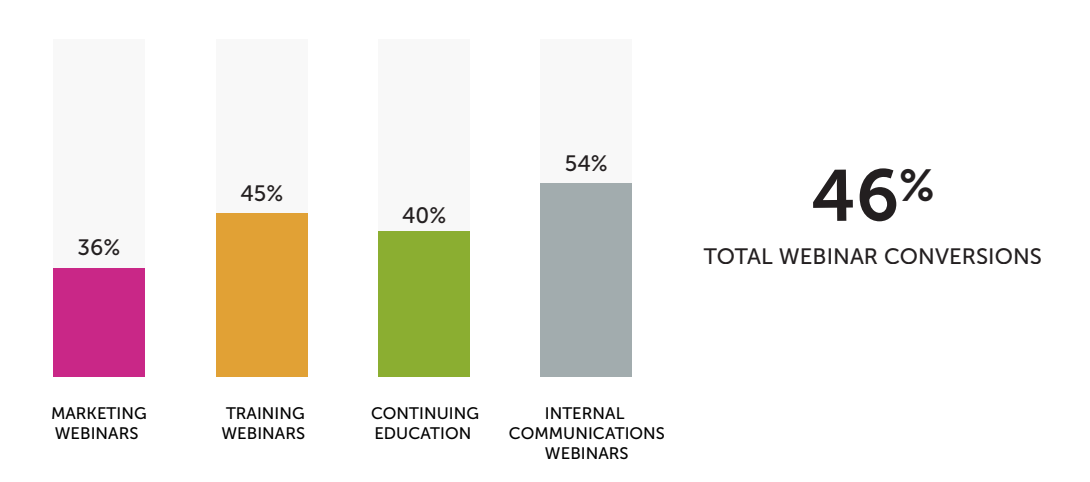
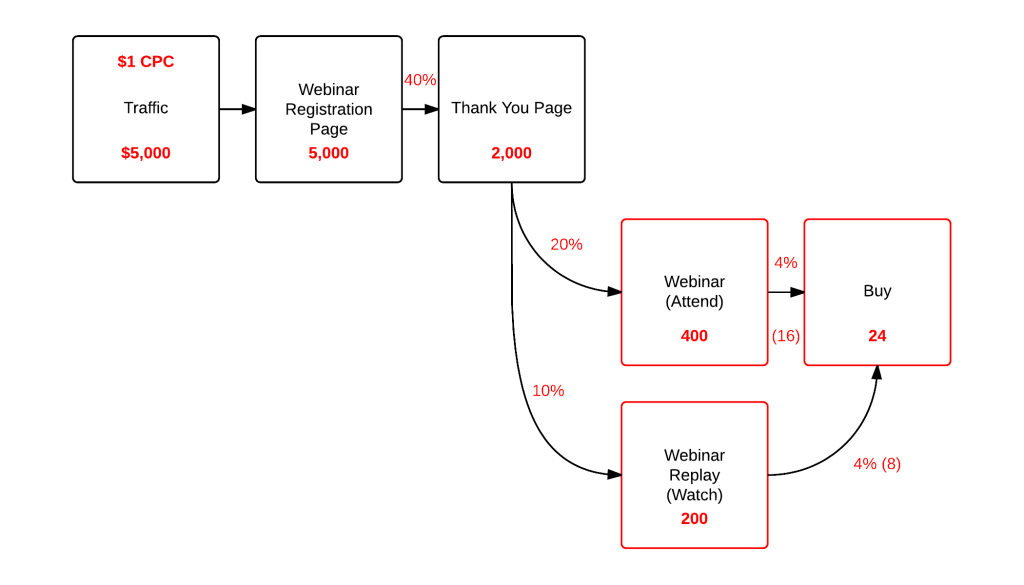
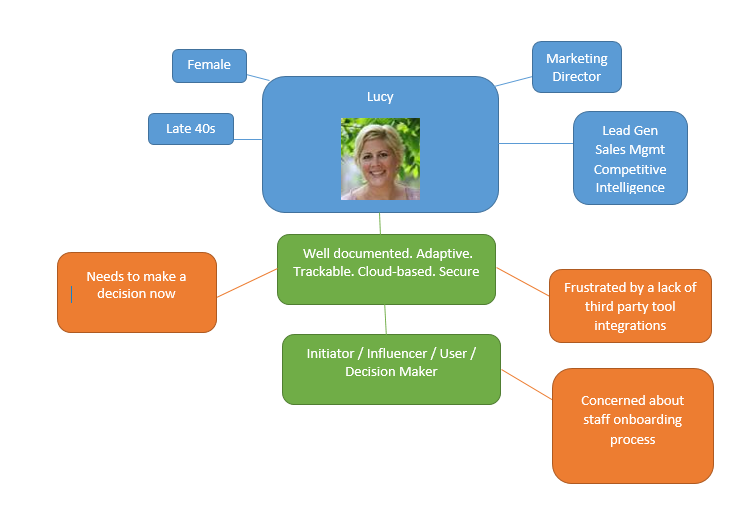
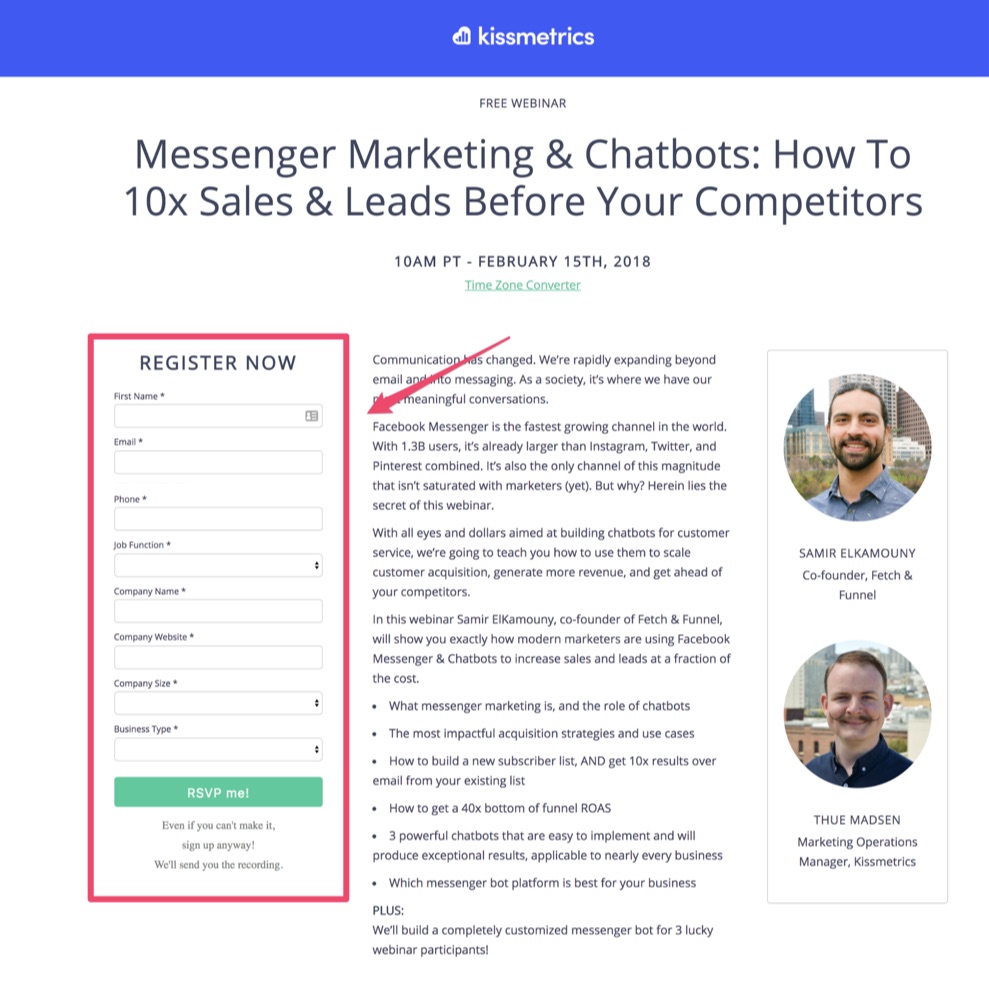
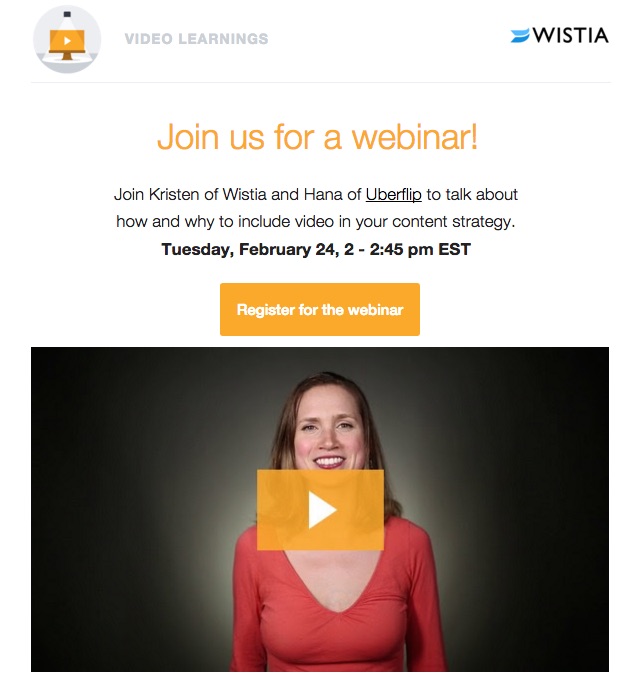
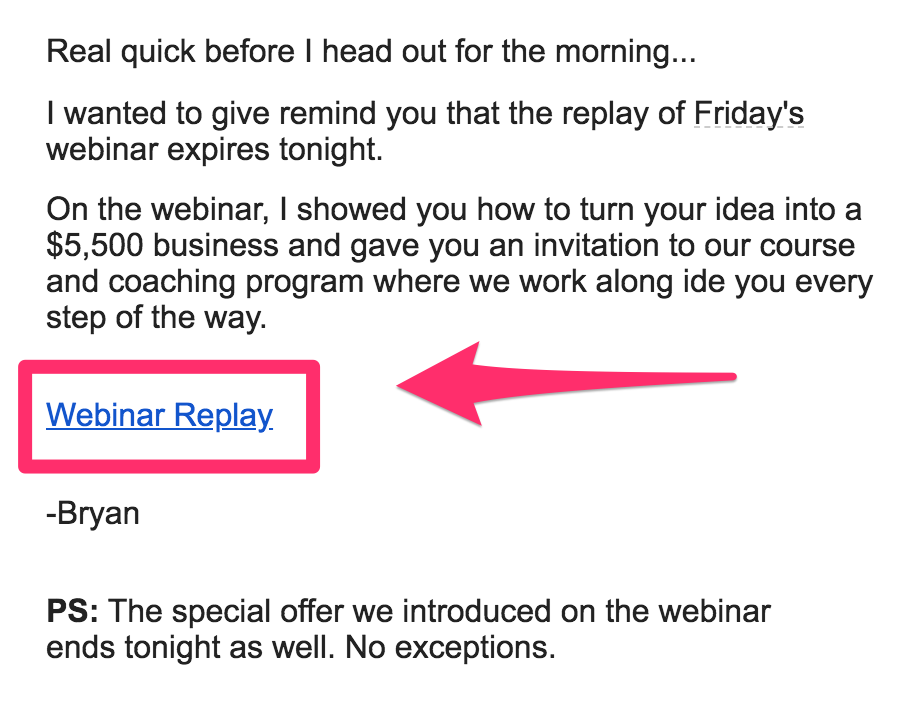
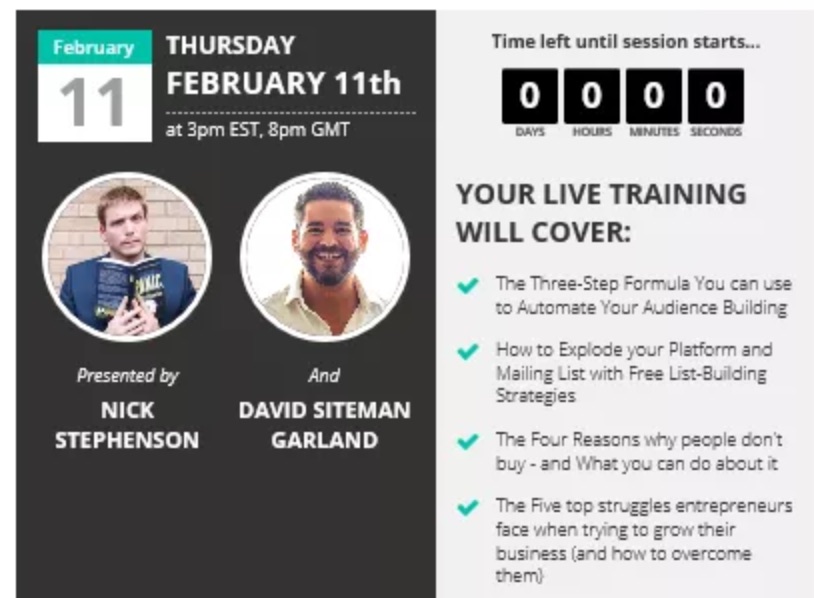
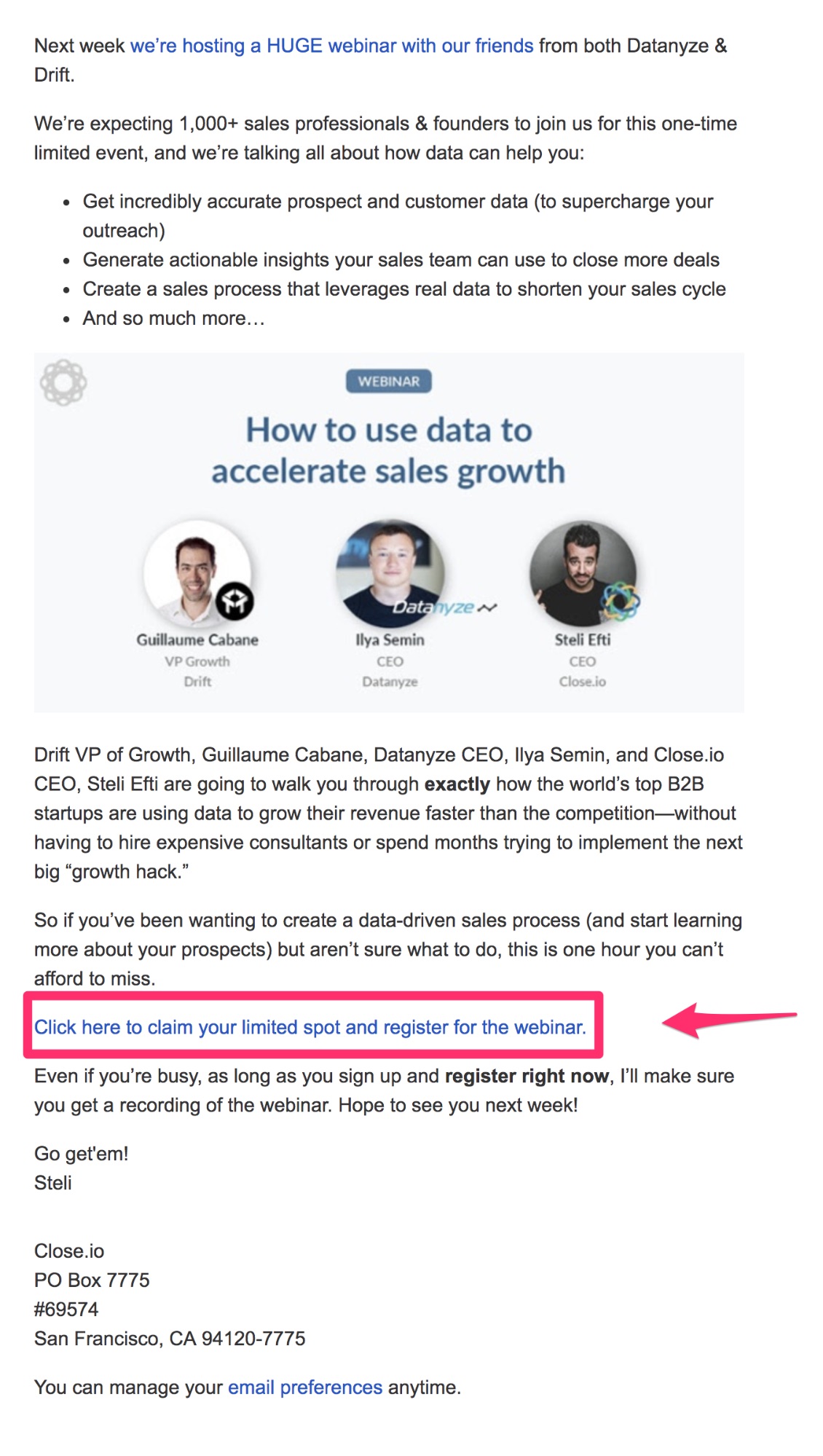

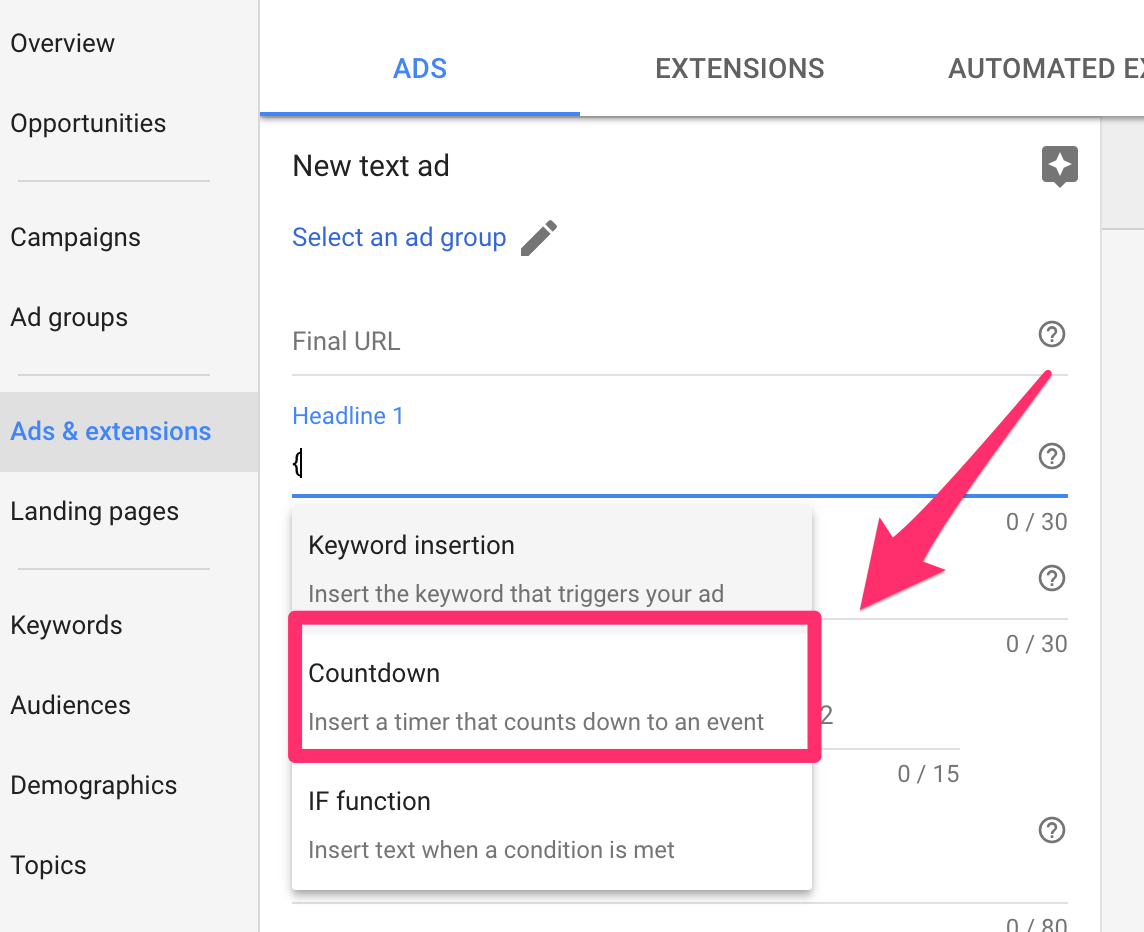
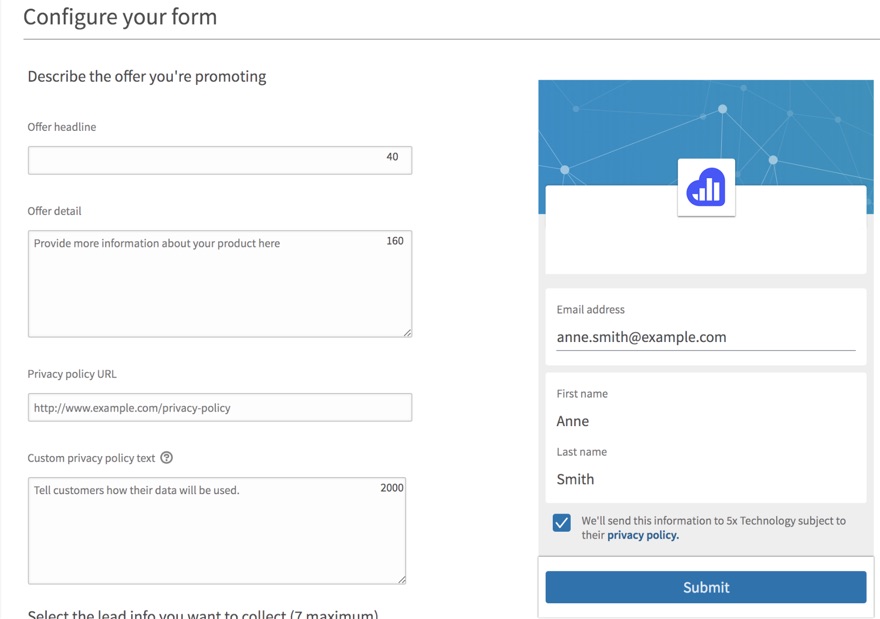
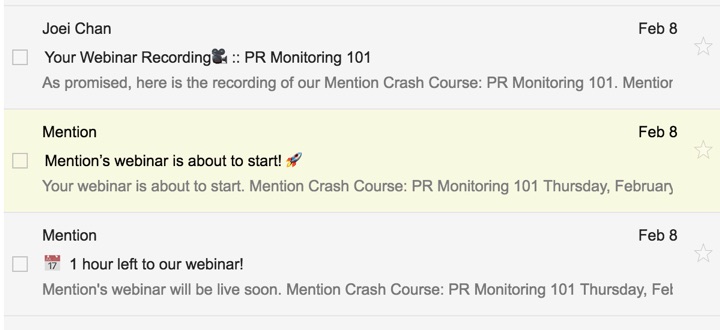

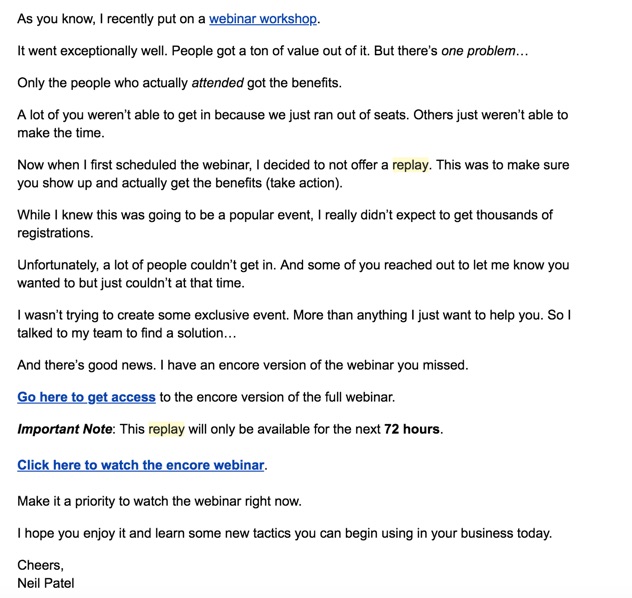
No comments:
Post a Comment